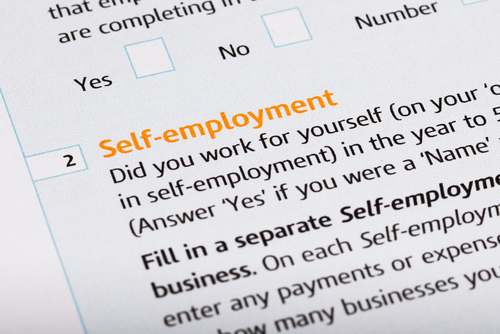News & Articles
Retirement Planning for the Self-Employed

It’s safe to say that auto-enrolment has proven to be a success with Employee Benefits reporting that eligible employees saved a total of £90.3 billion into workplace pensions in 2017. With more than nine million people currently enrolled into such a scheme, the pathway to a healthy retirement is a smooth one for many.
But what of the 4.8 million self-employed people in the UK? Auto-enrolment does not currently cater to this demographic and delays have meant that they won’t be eligible until at least 2022.
But the jury is out on whether this option would be well-received if it were rolled out to the self-employed. A recent report from the Association of Independent Professionals and the Self-Employed (IPSE) suggests that self-employed professionals would resist auto-enrolment due to a reluctance to give up any element of their financial flexibility.
This additional element of control over their finances is, after all, one of the most common reasons that many people become self-employed to begin with.
Taking the Sidecar
As an alternative to auto-enrolment, IPSE suggest a “sidecar” pension scheme allowing individuals to build up a flexible rainy-day fund with contributions diverted into their pension fund when they reach a certain level. NEST is currently developing such a scheme, but it remains to be seen when, how and if it will be implemented. Key considerations including pensions tax relief would need to be made as well as other finer details.
The underlying problem here is just how few self-employed workers are saving into a pension at all. The figures currently stand at just over a third (31%) of the 4.8-million-strong demographic. In addition, the IPSE report showed that only 36% of workers would stay enrolled in a workplace pension scheme should it become an option. In the face of such resistance, there is no simple solution which means that we are at risk of facing a self-employed pensions crisis down the line when retirement becomes a reality.
While the government can afford to delay in making the decision over whether or not to introduce freelancers into the auto-enrolment structure, it is the huge number of self-employed workers who have no retirement plans and nothing to fall back on that need to take action.
But it seems that awareness is not always enough. A recent report from Demos supported by IPSE shows that 46 per cent of self-employed workers in the UK are “seriously concerned” about their lack of savings. With the state pension alone usually proving insufficient to support a healthy and comfortable retirement, the need for presenting clear and viable retirement planning options to the self-employed is a pressing one.
Innovation Meets Tradition
Jonathan Lima-Matthews, IPSE senior policy adviser, describes self-employment as a progressive way of working for which current pension provisions did not match up. This shows that we need to create more transparency around pensions and prove that this traditional savings route has grown up with the times.
Pensions remain a viable, safe and dependable option for self-employed workers with a desire for flexibility and financial security in the long term. We also need to make sure that people are aware of the other options available.
For example, did you know that if you have left employment for self-employment, you may still be eligible to keep saving into your workplace pension scheme? This is a common scenario in those cases where the pension scheme is contract-based (outsourced). If your former employer hasn’t already offered you this option, it’s always worth checking to see if it’s a possibility.
Should you wish to set up a new pension scheme, there are plenty to choose from with different terms to accommodate various self-employed situations. Standard personal pension plans still offer healthy tax relief on contributions, with further tax relief opportunities available for higher earners.
There are a number of key issues to consider including whether there is a minimum pension contribution and any charges involved. You can also consider different types of saving vehicles such as the Lifetime ISA.
The Limited Company Situation
Many freelancers end up going down the limited company route as it makes good financial sense once you start earning over a certain threshold.
If you have incorporated as a limited company, you can also make pension contributions as employer contributions direct from your company. These contributions will also be eligible for corporation tax relief.
However, it’s important to remember that if you do start to employ even one member of staff, you will be required to set up a workplace pension scheme.
You will need to source an appropriate scheme and be clear on which employees you are legally required to enrol into it before you start paying pension contributions.
A financial adviser will prove valuable to help you set up an effective, compliant scheme and create transparent communications with your employees about the scheme and their contributions.
They will also ensure that you comply with ongoing regulations and fulfil the six principles of good governance outlined by the Pensions Regulator.
A Healthy Retirement
Back to the retirement savings challenge of the self-employed and you should now be able to see that there are many options available until (and if) the auto-enrolment model is amended to incorporate freelance workers.
With a recent survey from Schroders showing that many Britons underestimate how much they need to save for retirement, it’s essential to put effective provisions in place in order to avoid major financial challenges during your post-retirement years.
We recommend speaking with our financial advisers who will paint the bigger picture and identify the most effective solution to help you start saving for retirement in the most effective way. Should you wish, we can also recommend a range of investment options to make the most of your money and help you live the life and the retirement that you deserve.
…
For advice on retirement planning for the self-employed, give Vintage Wealth management a call on 020 8371 3111 or emailinfo@vintagewealth.co.uk
And for more details on any aspect of auto-enrolment our team at Vintage Corporate will be happy to hear from you – just call 020 8371 5232 or email info@vintagecorporate.co.uk
RECENT POSTS
-
 Employee experience: Understanding how benefits fit into a bigger pictureMarch 17, 2025
Employee experience: Understanding how benefits fit into a bigger pictureMarch 17, 2025 -
 Employee trends: What to expect from the workforce in 2025January 28, 2025
Employee trends: What to expect from the workforce in 2025January 28, 2025 -
 Early exit: How the FIRE movement can inspire pension engagement among younger generationsDecember 20, 2024
Early exit: How the FIRE movement can inspire pension engagement among younger generationsDecember 20, 2024 -
 Easing the pressure: How benefits can help address sources of employee stressNovember 26, 2024
Easing the pressure: How benefits can help address sources of employee stressNovember 26, 2024 -
 Pension plan: Supporting employees on the road to retirementOctober 24, 2024
Pension plan: Supporting employees on the road to retirementOctober 24, 2024
